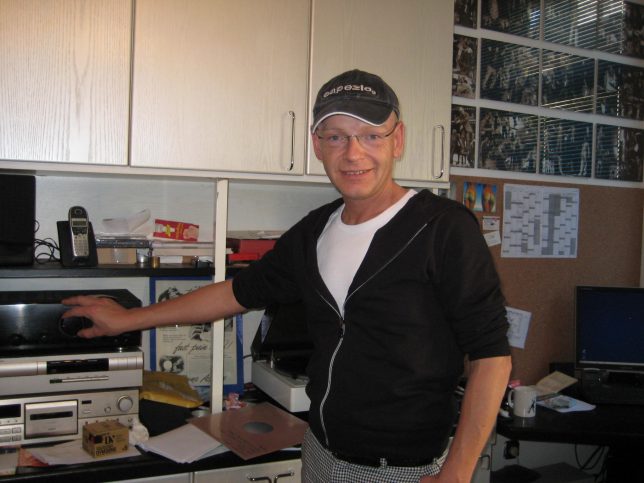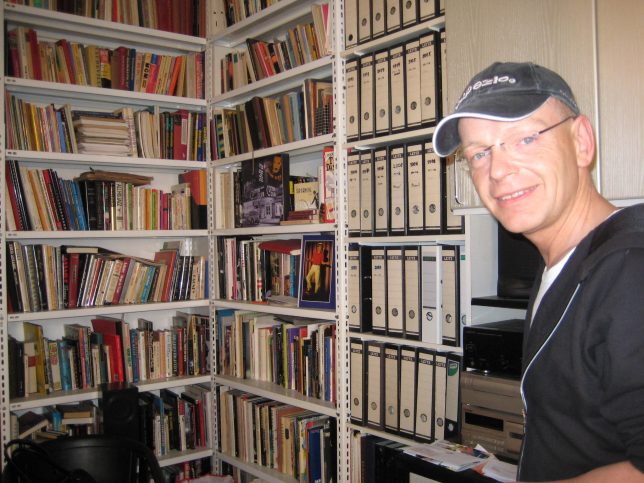
German Tap: Interview with Uwe Meusel
The Interview was originally conducted in German by Bernd Paffrath to appear in the German Tap Magazine, July 2023 issue.
Hello Uwe, the year before last your project was stalled after subscriptions were affected by the first Corona virus wave. But you now have this new offer for publication from the Kamprad publishing house – how did this come about?
Well the delay gave me the chance to re-shape the project for Kamprad, and I decided it would be better to split the complete work into two volumes, partly for size reasons – but also to create two cohesive volumes dealing with pre-war and post war recordings separately. With the differing slants on tap and music styles in each volume, I also hope to broaden the potential audience. So volume one deals with tap recordings made from 1926 to 1945. In this period of shellac records with predominantly swing music, the European output was particularly large, with more than half of it not yet published digitally. Therefore, it was important to me to preserve these recordings for the European tap dance history section in the first volume. With 255 music titles and 43 biographies, Volume 1, is still extensive, but thematically much easier to grasp. In addition, we have said goodbye to CD production as the recordings will now be provided in the form of WAV files in folders on a USB stick, which reduces effort and costs accordingly and makes listening to them far easier and more contemporary. I put the revised project to Mr. Kamprad, who remains fully committed and a new subscription period for the first volume starts in September.
How is your book organized now?
The book continues to follow the chronology of the original CD units, which are now in WAV file folders. For each folder there is a separate chapter in which all the recordings are described individually with background information. The biographies of the tap dancers represented on the corresponding folder then follow. The 43 biographies were written mainly in collaboration with Terry Brown, a vintage music researcher and writer from London, who wrote most of them and also revised my texts. Other authors, such as Sam Weber, have also helped to make the book a reference work, with information gathered through extensive research, mainly from archives and newspapers. Each biography has several pictures in black and white (altogether about 400), and between the individual chapters the 225 original record labels are illustrated in color. For the processing of the shellac recordings I was able to obtain the services of Christian Zwarg from Berlin, one of the best German restorers, so that the best possible quality of reproduction from the 235 music titles is guaranteed.
Which parts are you particularly proud of?
The introductory folder „A Tribute to Bill Robinson“ was a matter close to my heart. It really gets you close to the father of tap dancing, especially in the unreleased radio and private recordings included. I would also mention that we were able to identify six alternate takes of Fred Astaire recordings, which are presented with 30+ tap recordings, brought here together in their entirety for the first time. The English recordings are great listening and largely unknown. Even rarer are the instructional books that can be used to learn tap technique up to intermediate level in various languages. One gets an insight into the development of tap terminology and different forms of notation and this part is complemented by seven PDF documents with a total of 211 pages. The Swing era recordings are mostly songs with orchestra and usually with a tap dance chorus. Many of the pieces have become „earworms“ for me that accompany me wherever I go.
What is the specific subscription process?
In early September, Verlag Kamprad will once again put its subscription site up online. The subscription price for the book with USB stick is 198,- Euro. We will open subscriptions on September 18 for a six week period ending on October 31, 2023. When we have reached at least 200 paid subscriptions, production can start. From October 31, the book will cost 248,- Euro. So you save 20% by pre-ordering and make the publication possible.
Are you confident that it will work this time?
At the time we had to pause the project we had already reached 110 pre-orders. If those subscribers remain loyal to us and renew their subscription, we should be able to get the remaining pre-orders, particularly as the price is lower than last time. I am happy about every personal contact made and the fulsome support from the tap scene and hope that we will manage to get where we want to be in the fall. If everything works out, then next year we will also get the option to put out the already completed Volume 2, „Post-War Recordings“ for subscription as well.
Thanks for the update, German Tap will continue to report on the progress. All the best!
